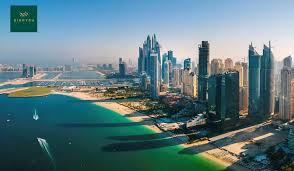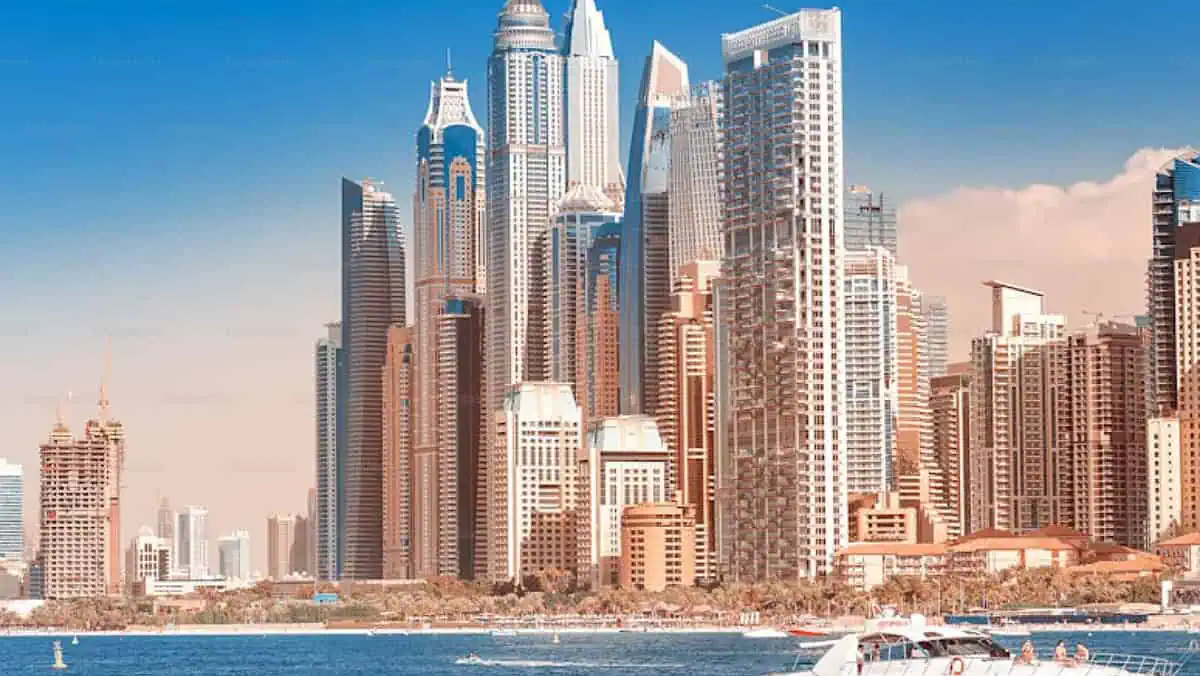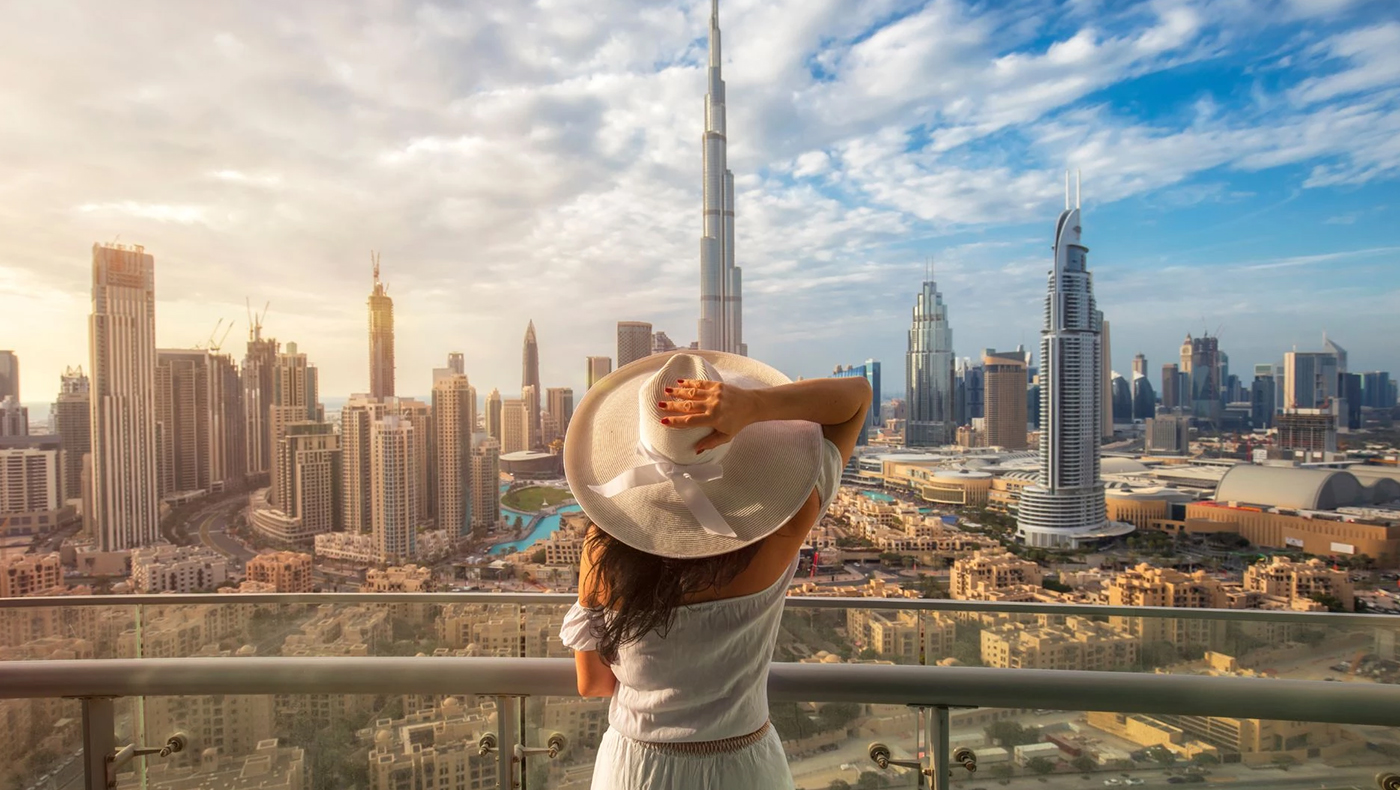Now Reading: Dubai Property Sector: 6 Tax Trends Shaping High-Rise Developments
-
01
Dubai Property Sector: 6 Tax Trends Shaping High-Rise Developments
Dubai Property Sector: 6 Tax Trends Shaping High-Rise Developments

Table of Contents
Dubai’s real estate market continues to thrive as a global investment hub, particularly for high-rise developments that dominate its skyline. For U.S. investors, the absence of personal income tax, capital gains tax, and annual property taxes combined with high rental yields of 6-10% makes Dubai a compelling alternative to U.S. markets, where taxes can reduce returns by 15-30%.
The UAE dirham’s peg to the U.S. dollar ensures currency stability, and the Golden Visa, offering 10-year residency for investments of AED 2 million ($545,000), adds further appeal. In 2025, Dubai’s market is booming, with Q1 transactions reaching AED 110 billion and a 19.9% price increase, per Dubai La
nd Department data. This article explores six tax trends shaping high-rise developments in Dubai, empowering U.S. investors to capitalize on tax-efficient opportunities in this dynamic sector.
1. Stricter VAT Zero-Rating Compliance for Residential High-Rises
Under UAE’s Federal Decree-Law No. 8 of 2017, the first sale of residential properties, including high-rise apartments, within three years of completion is zero-rated for VAT, allowing developers to recover input VAT without charging buyers. In 2025, the Federal Tax Authority (FTA) is enforcing stricter compliance, requiring developers to submit completion certificates and sales records within 30 days to qualify.
This ensures projects like Emaar’s Creek Crescent in Dubai Creek Harbour (starting at AED 1.3 million, $354,000) remain VAT-free for buyers, reducing costs compared to U.S. markets with 5-8% transaction taxes. Non-compliance risks a 5% VAT charge, so U.S. investors should verify developer adherence.
2. Expanded Golden Visa Thresholds for High-Rise Investments
In 2025, the UAE is lowering the Golden Visa investment threshold for off-plan high-rise properties in designated areas like Dubai Marina and Business Bay from AED 2 million ($545,000) to AED 1.5 million ($408,000), per UAE Government updates.
This makes projects like LIV Marina in Dubai Marina (AED 1.2 million, $326,000) more accessible, offering 6-6.5% yields and residency benefits. The tax-free environment no income or capital gains taxes enhances returns, while residency reduces management costs. U.S. investors must report rental income on IRS Schedule E, with deductions like depreciation ($36,364 annually for a $1 million property) offsetting taxes.
3. Domestic Minimum Top-Up Tax (DMTT) Impact on Developer Financing
Starting January 1, 2025, the UAE’s 15% Domestic Minimum Top-Up Tax (DMTT), aligned with the OECD/G20 Pillar Two framework, applies to multinational developers with global revenues over €750 million ($800 million). This may increase financing costs for high-rise projects, as developers like Emaar or Damac face higher tax burdens on non-qualifying income, potentially affecting off-plan pricing.
However, residential sales remain zero-rated for VAT, and smaller developers are exempt from DMTT, preserving affordability for projects like Azizi Riviera in Mohammed Bin Rashid City (AED 600,000, $163,000). U.S. investors should prioritize developers with strong financials to mitigate cost pass-through risks.
4. Enhanced Escrow Protections for Off-Plan High-Rises
The Real Estate Regulatory Agency (RERA) is tightening escrow regulations in 2025 under the updated Oqood system, mandating 100% of buyer payments for off-plan high-rises be held in Dubai Land Department-regulated escrow accounts until project milestones are met.
Fines for non-compliance, including delays beyond the 180-day construction start rule, increase to AED 500,000 ($136,000). This protects U.S. investors in projects like Emaar’s Address Residences in Downtown Dubai (AED 1.5 million, $408,000, 6-7% yields), ensuring funds are secure. Verify escrow compliance to avoid delays, boosting confidence in tax-free returns.
5. VAT-Exempt Long-Term Leases for Residential High-Rises
Long-term leases (over six months) for residential high-rise apartments remain VAT-exempt in 2025, reducing costs for investors compared to commercial properties, which face a 5% VAT. This benefits high-rise zones like Business Bay (6-7% yields) and Dubai Marina (6-6.5%), where apartments start at AED 750,000 ($204,000). For example, a $1 million apartment yielding 7% generates $70,000 tax-free annually, versus $49,000-$56,000 in the U.S. after taxes. U.S. investors can further offset IRS tax liability with deductions for maintenance, management fees, and depreciation. Prioritize long-term leases to maximize tax efficiency.
6. Blockchain Tokenization and Tax Classification for High-Rises
Dubai is advancing blockchain-based property tokenization for high-rise developments, allowing fractional ownership. In 2025, the FTA is clarifying tax rules: tokens classified as “virtual assets” may qualify for VAT exemptions, while “traditional property interests” face 5% VAT for commercial units. Residential token sales in high-rises like Burj Al Arab Views (AED 1.5 million, $408,000) remain zero-rated if sold within three years. This trend, prominent in Dubai Creek Harbour, boosts liquidity but requires U.S. investors to confirm token status to avoid VAT surprises. Report tokenized income on IRS Schedule E.
U.S. Tax Compliance Considerations
Dubai’s tax-free environment no income, capital gains, or property taxes delivers superior returns compared to U.S. cities like New York (2-4% yields). A $1 million high-rise apartment yielding 7% generates $70,000 tax-free annually, versus $50,000-$60,000 after U.S. taxes. U.S. investors must report rental income on Schedule E, deducting expenses like depreciation, maintenance, and management fees. Foreign assets over $50,000 (single filers) or $100,000 (joint filers) require Form 8938, and accounts exceeding $10,000 need an FBAR. Non-compliance risks penalties up to $100,000. The 4% DLD transfer fee isn’t creditable against U.S. taxes. Consult a tax professional to optimize deductions.
Risks and Mitigation Strategies
Dubai’s market is robust, with AED 306.3 billion in 2024 transactions and a projected 5-9% price increase in 2025. However, off-plan high-rise delays, DMTT-related cost increases for large developers, and potential oversupply in Business Bay pose risks. Global economic factors, like oil price volatility, could affect demand. Mitigate by choosing developers like Emaar or Azizi, verifying escrow and VAT compliance, and diversifying across zones like Downtown Dubai and Dubai Marina.
Why Dubai in 2025?
Dubai’s Economic Agenda D33, targeting a doubled economy by 2033, and 25 million projected tourists in 2025 drive high-rise demand. Tax trends like zero-rated VAT, VAT-exempt leases, and Golden Visa expansions enhance ROI, with yields (6-10%) outpacing global hubs. These six trends stricter VAT compliance, Golden Visa updates, DMTT impacts, enhanced escrow protections, VAT-exempt leases, and tokenization shape high-rise investments, offering U.S. investors tax-efficient opportunities in Dubai’s dynamic market.
In conclusion, Dubai’s high-rise developments, backed by tax-friendly policies, attract global investors. By leveraging these tax trends, partnering with reputable developers, and ensuring IRS compliance, U.S. investors can maximize returns in one of the world’s most vibrant real estate markets in 2025. Dubai Property Sector
read more: Dubai Real Estate: 6 Tax-Safe Investment Strategies for High Net-Worth Buyers



















